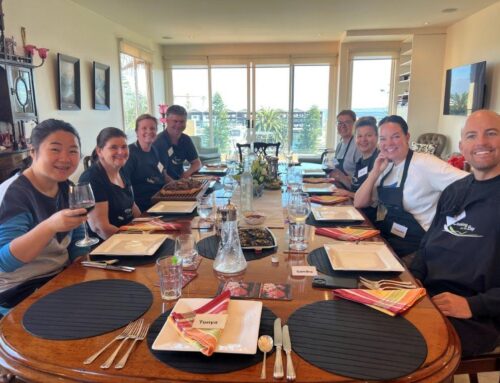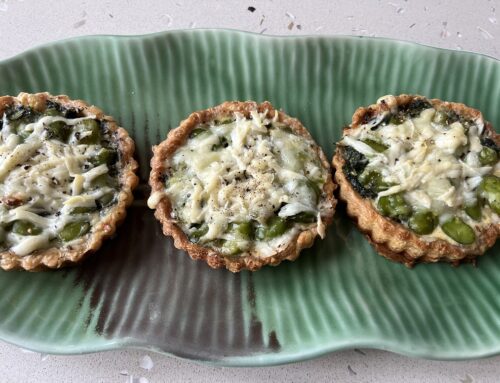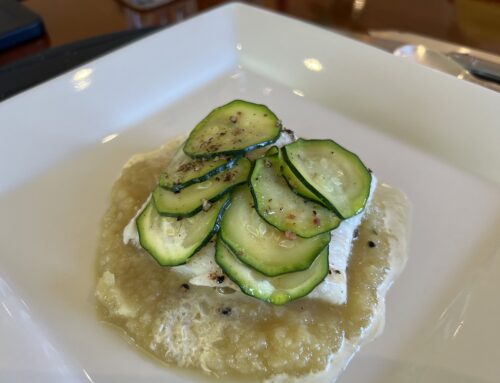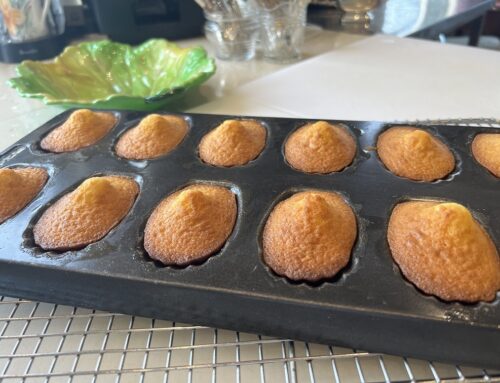Affogato is Italian for drowned; the ice cream is drowned in espresso with the liqueur served on the side. It is the easiest of all desserts, once you have mastered the ice-cream making.
Make your Crème Anglaise vanilla bean ice cream as per my recipe.
When ready to serve, make your espresso shot, place one or 2 scoops of ice cream in your serving dish or glass bowl and ‘drown’ it with your shot of espresso coffee; serve a shot of your liqueur on the side, ready to pour over the ice-cream.
Frangelico, the hazelnut flavoured liqueur, is the traditional liqueur used for affogato. However, any liqueur is lovely, limoncello, Grand Marnier, Cointreau; also good is almond affogato is topped with Galliano Amaretto.
For the Crème Anglaise
A crème Anglaise is the classic base for an ice-cream. It can be a little difficult to make for a novice cook, so take care. When cooking the custard and the custard thickens, as soon as it has reached 83℃, it is done. If you don’t have a sugar thermometre, you need to assess the viscosity of the custard, by running your finger down the back of the spoon; if the custard is thick enough, your clean line stays in place. In cooking class, to rectify the beginnings of scrambling of the eggs in the custard, I have another clean bowl and a bowl of iced water on hand to immediately tip the scrambled mixture into the cold, clean bowl and then into the ice slurry to cool quickly and ‘save’ the crème anglaise from cooking any further. This is quite a good tip to heed, especially if you are new to making these custards.
For the Crème Anglaise Vanilla Bean Ice-cream
Makes 1 litre
750ml of pouring cream
1 vanilla bean, split with the seeds scraped or 2 tablespoons of vanilla paste
5 egg yolks
120g of xylitol – the low carb plant sugar substitute
If you are using the vanilla bean, cut it down lengthways, through the middle; scrape the precious seeds out by running the tip of your knife down each side of the seed. Carefully place these seeds into a medium heavy-based saucepan with the cream. Throw in the seed pod as well for extra flavour. Scold the cream which is to heat it until the mixture just starts to simmer. Do not let it boil.
Meanwhile, separate your eggs, reserving the white eggs for another use. I always freeze my egg whites in small containers of 2 egg whites each. Beat the egg yolks and xylitol in a bowl until pale and thick. Remove the vanilla bean from the cream mixture and whisk in the hot cream, a little at a time, into the egg mixture.
Clean the saucepan and return the mixture back over low heat. Stir constantly with a wooden, flat bottomed spoon until the mixture has thickened and coats the back of the spoon. If you have a food thermometre use it and remove the custard from the heat when it registers 83℃. This can take between 5 – 15 minutes depending on the quantities.
Pour the crème anglaise into a heatproof bowl and allow the mixture to cool* at room temperature, stirring occasionally to release the heat until there is no visible steam coming from it. Once cooled, cover the top surface of the crème with cling wrap to prevent a skin from forming. Store until required. This is a delicious sauce to accompany your desserts, fruits or ice creams.
To make your ice cream, pour the chilled crème anglaise mixture into the chilled bowl of the ice cream churn and follow the machine’s instructions.
*To cool the mixture quickly pour it into a metal bowl and then place into an ice slurry and stir until well chilled. When making ice-cream, I usually refrigerate the crème anglaise overnight.






